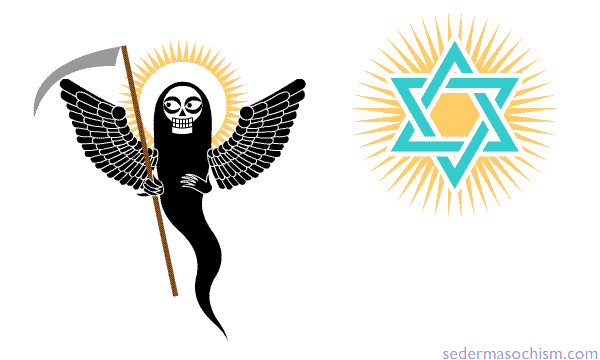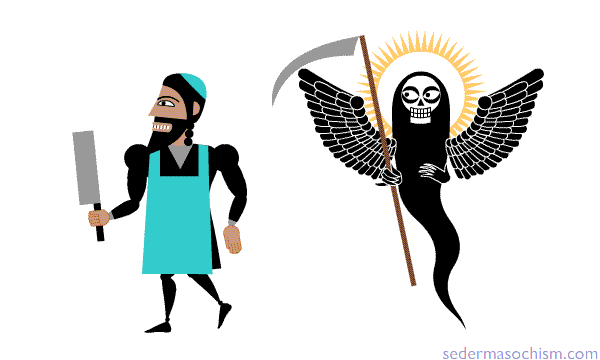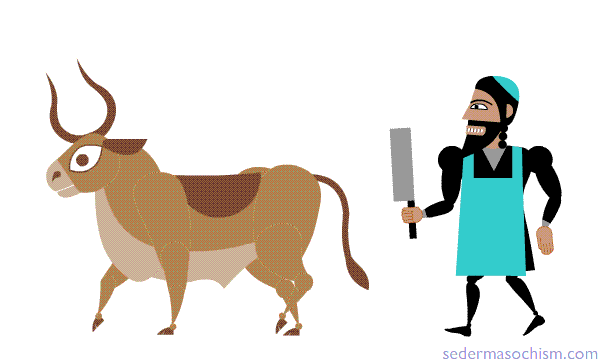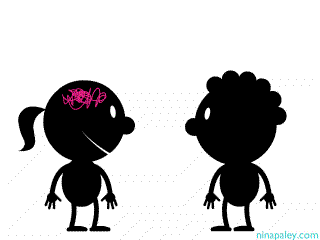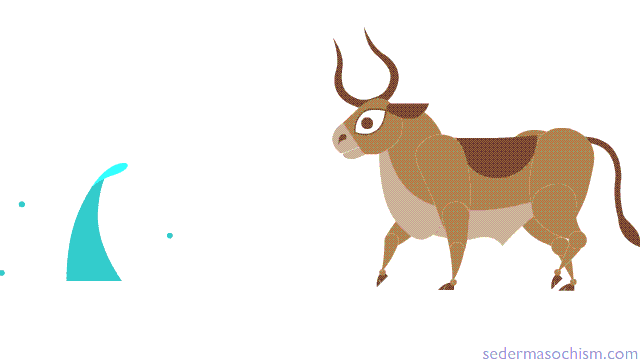…and smote the Angel of Death that slew the Slaughterer that killed the Ox that drank the Water that extinguished the Fire that burnt the Stick that beat the Dog that bit the Cat that ate the Goat that my father bought for two zuzim. Chad Gadya
The Angel of Death came…
…and slew the Slaughterer that killed the Ox that drank the Water that extinguished the Fire that burnt the Stick that beat the Dog that bit the Cat that ate the Goat that my father bought for two zuzim. Chad Gadya
The Slaughterer came…
…and killed the Ox that drank the Water that extinguished the Fire that burnt the Stick that beat the Dog that bit the Cat that ate the Goat that my father bought for two zuzim. Chad Gadya
Update: animation modified to show Shochet slicing from below. He’s still decapitating the poor beast, but it’s slightly more kosher for sticklers. Yes I know kosher slaughter involves slitting the animal’s throat, it just seems so grotesque that the cartoon shorthand of bloody decapitation expresses it best for me. But for those who consider slitting from below important, here ya go.
Transmission
The Ox came…
…and drank the Water that extinguished the Fire that burnt the Stick that beat the Dog that bit the Cat that ate the Goat that my father bought for two zuzim. Chad Gadya

